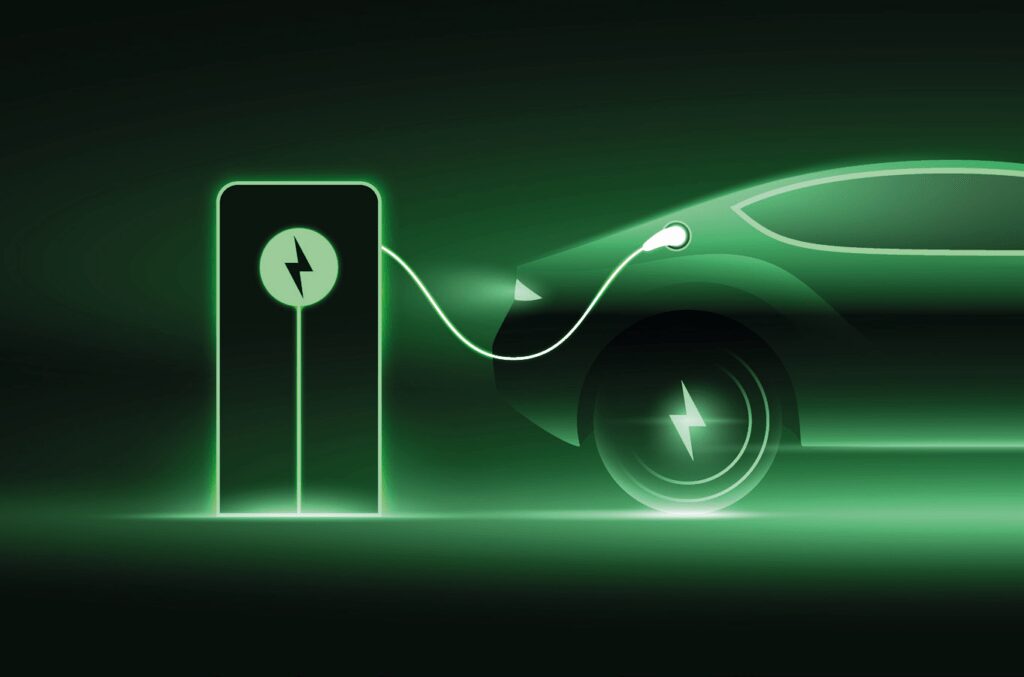Mobility is one of the basic needs of a modern society. It accompanies us throughout our lives and must be affordable and adaptable to the individual needs of travelers. Ideally, it should be compatible with different modes of transport and smart city services, such as navigation, parking, refueling, and payment systems, which can be seamlessly integrated. This type of connected mobility is called multi-modal MaaS.
A design of such multi-modal mobility and its embedding in a human-centered smart city ecosystem will not only permanently change the automotive industry and the interaction between different means of mobility, but also the mobility behavior of travelers and ultimately the cityscape.
Positive impact on mobility behavior and car owners
Imagine the situation of a traveler: you want to do an autumn hike in the mountains for a few days. The weather is nice. Your virtual travel assistant will recommend you take an eco-route because you still need a few eco-bonus points to exchange for an opera ticket. In addition, you might be able to meet your school friend on the way, who is scheduled to be in the area.
Or you are planning a business trip from Amsterdam to the greater Munich area. You want a stress-free trip so you can get to work right after arriving at the customer’s place. Your virtual travel assistant optimizes the travel plan and books a rental car at Munich Airport with an almost identical interior setting as your own car at home in order to make the onward journey as relaxing as possible. Unfortunately, your plane is delayed; your virtual travel assistant immediately postpones the pick-up time of your rental car and informs the customer about the newly calculated arrival time.
Now let’s think one step further. Actually, we no longer need our own cars because we can rent one at any time and in any place, which is adapted exactly to our individual needs, or use the variety of multi-modal MaaS flexibly and cost-effectively, regardless of whether we are disabled, traveling with a baby, or a large family.
Car owners can cover their operating costs and even make a reasonable profit by sharing their vehicles with others. However, the vehicle-based insurance model must be adapted accordingly.

Positive impact on sustainability and cityscape
The multi-modal MaaS business model increases the efficiency of each individual vehicle and thus ensures a medium- and long-term decline in resource and energy requirements in production in the entire automotive and adjacent manufacturing industries.
Thanks to the multi-modal MaaS, the total number of cars will decrease, eliminating unnecessary parking spaces and creating additional living spaces.
To ensure that sustainability is not used as a marketing gimmick, it makes sense for the environmental authority to proceed together with the approval authority and define acceptance criteria for industry. The basis for this is various regulations, such as CSR, GRI, and UN Sustainable Development Goals.
Anyone who believes that sales markets for the automotive industry in industrialized countries will continue to rise as they have so far is mistaken.
The production of a car is cost-intensive, especially in the current situation where energy, raw materials, and labor have become even more expensive because of the pandemic, supply chain problems, and Ukraine wars. On the other hand, we, the consumers, have been suffering from global inflation and financial crises for years. In addition, there is already a poor cost-benefit ratio for cars:
- A car is usually parked in the parking lot, for which we have to dig deeper and deeper into our pockets.
- A new vehicle experiences a rapid loss of value after purchase.
- The owner must pay the ongoing insurance, maintenance & repair costs.
- Every registered car potentially contributes to congestion and pollution, while at the same time taking up a piece of valuable living space.
All these factors hold consumers back when buying a new car. This situation will continue for some time. Furthermore, demographic change and increasing environmental awareness among the younger generation have led them to be willing to do without their own cars. But in every crisis, there is also an opportunity. The bigger the crisis, the more opportunities it hides. It is time for leaders to join forces in innovation on a global level, to build a sustainable society through mobility transition, and to break out of these multiple crises together.
The design of such a multi-modal MaaS ecosystem is groundbreaking as it will trigger several technological innovations and paradigm shifts in the automotive industry.
From component-oriented and waterfall-based vehicle development to software-defined hybrid vehicle lifecycle management
The business model of a traditional automotive OEM is to assemble the components manufactured by suppliers. The overall vehicle architecture and associated hardware components are specified by OEMs or developed together with suppliers. After that, vehicle architecture is frozen and released for production.
A small change in hardware design could trigger new orders and possibly a cascaded conversion of production lines along the entire supply chain. Because changes in vehicle architecture are always associated with high costs, the waterfall-based vehicle development process is widely established in the automotive industry.
However, with the increasing number of networked functions in the vehicle as well as between vehicles and smart city services, software plays an increasingly important role in the hardware-dominating automotive industry. Other than hardware, software development takes a cyclical approach due to frequent needs for functional improvement, integration, troubleshooting and closing new security gaps. Process-side decoupling and technologies that enable interoperability between software and hardware components will resolve the conflict between waterfall-oriented hardware and agile software development.
Framework SAFe 5 for Lean Enterprise (https://www.scaledagileframework.com/) supports this software-defined product lifecycle management process. Accordingly, new developments in the event-oriented Adaptive Autocar standard and System-on-Chip (SoC) technology undermine this hybrid vehicle development.
From component-oriented functional safety to a holistic cyber and functional safety architecture
A connected vehicle function is only as secure as the weakest link in the entire network. The security architecture shifts from protecting a single element to protecting the entire process chain. Functional safety comes from automation technology. However, unauthorized manipulation of functions or parameters in connectivity, production, and service environments can cost lives, especially with highly networked and automated robot axis.
Protection needs assessment and risk assessment are integral parts of a holistic architecture design process, both for vehicle design and for the development of the tool chain and infrastructures. In addition, the diagnostic capability of the vehicle is essential for safety analysis and troubleshooting. To ensure that safety software packages are distributed quickly and in a targeted manner, software architecture is crucial in addition to vehicle system architecture, especially in autonomous driving.
From hardware-oriented manufacturer to hybrid mobility platform and mobility experience provider
A lucrative by-product of the software-defined vehicle lifecycle process is the enabling of profit-generating digital business models. As a result, highly scalable individual mobility experiences are decoupled from abandoned cars and seamlessly integrated with other means of transport and smart city services. Thus, automotive OEMs can compensate for a potentially declining sales figure through individual mobility and smart city services. The operating profits from a diverse digital business model will grow steadily and thus overtake the real sales market in the medium and long term and become the main source of income.

From sales-oriented car dealership to MaaS customer care center
Car dealerships or 4S shops benefit from digital in business models by gaining more autonomy and accountability so that OEMs no longer have them. From year to year, more and more cars have to commit themselves in a trend towards declining. This is the first time that we have had a debate on this subject.
Customers are increasingly taking the place of automobiles. Thus, the car dealership becomes an important hub between the mobility support of customers and the development teams of the OEM for continuous development of vehicles and mobility experiences.
With the help of Artificial Intelligence (AI), Remote Software Update (RSU) and process automation, a car dealership can offer its customers individual mobility experiences remotely anytime and anywhere. The scalable digital business model enables continuous growth – without any stress at the end of the fiscal year.
The associated risks are, for example, loss and misuse as well as ethnic discrimination in the collection and processing of personal data. Data compliance must first be clarified with the data protection officer. In addition, it must be ethically and procedurally determined who and how may process which data. In addition, the renewal of the systems and IT infrastructure in the dealership is necessary to get risks under control.
From paper tiger to innovation driver for sustainable social digital transformation
To ensure that legal requirements, sustainability goals, and social responsibility are considered in every approved technology, product, and service, it is effective for the state, city, or local council to develop the sustainable digital strategy for itself. Based on this, concrete acceptance criteria are developed, agreed upon with industry associations, technically tested, and permanently monitored.
Appeal
No industry or country can create this holistic, sustainable digital transformation alone. We need to bring together global talent, investors, and the public and private sectors and pull in the same direction. Let’s make money and a positive impact together!

Reference
- Yao Schultz-Zheng, would we Lose our Individual and be Borgs in a highly Connected Digital World?
LinkedIn Post, Dec 15, 2018
- Yao Schultz-Zheng, Unleashing Innovation in Blockchain
Global Executive Events, Dec 10 & 11, 2018, Amsterdam
- Yao Schultz-Zheng, Disrupt or be disrupted.
LinkedIn Post, Feb 21, 2019
- Yao Schultz-Zheng, Data Protection as Fuel for Sustainable Digital Transformation,
AKJ Associates Conference: 12th e-Crime & Cybersecurity Congress, Frankfurt, Jan. 2019
- Yao Schultz-Zheng, How Digital Business Model Will Impact IBP
Conference: 2nd Annual IBP Summit, Frankfurt, June. 2019
- Yao Schultz-Zheng, Has Autonomous Driving been disrupting Automotive Industry?
4th China Intelligent Connected Vehicle Forum, Shanghai, Sept. 2019
- Yao Schultz-Zheng, ADAS & Automated. Self-Driving and Autonomous Car
Qepler Conference: Automotive Electronics & Sensors Summit 2020, Mar 31, 2020,
- Yao Schultz-Zheng, E-Mobility Sharing Economy is a game changer and will benefit both Automobile Industry, City and Consumer
Pitch on Sidepreneur Meetup, Jan 15, 2020
- Yao Schultz-Zheng, Corona Pandemic Forces to Radical Rethink
Medium, Apr 17, 2020
- Yao Schultz-Zheng, Is Mobility-as-a-Service a curse or a blessing for the automotive industry?
Medium, Nov 16, 2021
- Yao Schultz-Zheng, Reinventing Yourself, Actively Shaping the Future
Medium, Mar 25, 2021
- Yao Schultz-Zheng, Reshape a Sustainable and Resilient World Economy Together
LinkedIn Post, Feb 2022
- Yao Schultz-Zheng, Sustainability and Digital Transformation
PODCAST Mittelstand on YouTube, Podcast, Vimeo & Spotify, Jul 5, 2022
- Yao Schultz-Zheng, Securing your Digital Transformation
AKJ Associates Conference: 19th e-crime & Cybersecurity Congress Deutschland, Jun 02, 2022, Munich
- Yao Schultz-Zheng, obstacles and risks in e-car production
China Team Conference: 2nd Taicang German SME Conference 2022
- Yao Schultz-Zheng, Sustainability with and through digitalization
Münchner Kreis Conference: Digitalization & Sustainability: From Measuring to Action, Nov 23, 2022
- Yao Schultz-Zheng, Establishing Homologation Standard for Sustainable Smart Mobility & City
TECH FORUM Webinar: Sustainable Transport for Smart Cities, EUTECH Chamber, Jan 10, 2023
